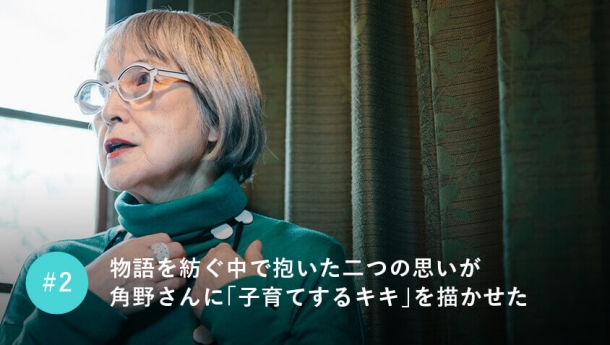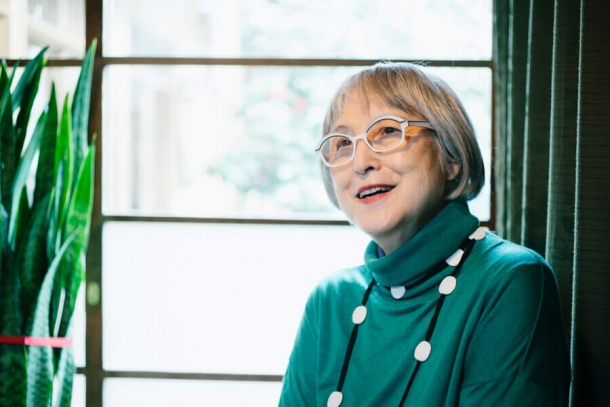
#2 As She Developed the Story, Two Thoughts Inspired Kadono to Depict Kiki as a Mother
Q. After graduating university, you found employment at a publisher and then got married. In 1959, when you were 25, you and your husband suddenly moved to Brazil. Although your father was concerned about the decision, you were very excited about heading to uncharted territory. It reminds me of the scene in Kiki’s Delivery Service where Kiki leaves her parents’ side to depart on a journey as she compares her feelings to the excitement of opening a gift.
Kadono: Kiki and I have some things in common. When I departed to Brazil, I had the same feelings as Kiki. I still love to travel, but going to Brazil was something else. We had to cross three seas to get there —a route that no longer exits.
Q. When I was younger, I related to Kiki and felt like I was growing up with her. But now I read the story from the perspective of Kiki’s mother, Kokiri.

Kadono: That’s because Kiki herself becomes a mother in volume six. Only the first volume had been written when Studio Ghibli and Hayao Miyazaki created the film adaptation, and I hadn’t yet thought of what would come next. That’s because I believe stories which begin after a tale’s end belong to the reader. When people told me they wanted the story to continue, I wrote a sequel. Now after around 27 years of writing, there are six volumes in the series. But not many people are aware of how many volumes there are. [laughs]
Q. Why did you want to depict Kiki as a mother in volume six?
Kadono: I had two thoughts while writing Kiki’s Delivery Service. The first is that there is only one magical power and everyone has it. The other is the question of why boys can’t become witches. When Kiki married and gave birth to twins, one boy and one daughter, the focus of the story shifted to how the boy could acquire magical abilities.
Q. Even though his mother is Kiki, a witch, he can’t fly. That is quite the conflict.
Kadono: But the boy does possess magic. Maybe he can’t fly, but he feels his calling, which spurs him to hop on a train and embark on a journey.

Q. Does volume six mark the finale of Kiki’s Delivery Service?
Kadono: There are already two spin-offs, and there might be another on the way. I’d like to write a story focusing on Keke, a character who appeared in volume three.
Q. Keke! The mysterious girl who may or may not be a witch. I’m really drawn to that character. Before Keke’s appearance, most characters are nice to Kiki. But Keke actually poses a threat to her. Why did you introduce her?
Kadono: It was an impulsive decision. At that time, “ganguro girls,” girls who use white concealer as eye shadow and sit on the ground in a rebellious way, were all over Shibuya. I didn’t dislike these girls; I felt they were vigorously expressing themselves. So I gave Keke a similar hair style and black clothes. She is incredibly smart, and a bit twisted. It was really fun writing her.

Q. Keke aggravates Kiki so much that I felt bad for the goodhearted Kiki. But as I kept reading and started to learn Keke’s backstory, I was so moved that I started to cry.
Kadono: That’s right. Kiki is certainly goodhearted, but her teenage years, as depicted in volumes three through five, are perilous. She loses sight of herself and gets possessed by feelings of jealousy. I think these are things everyone goes through. My daughter , too , went through a similar phase in junior high and there were a lot of things she wouldn’t share with me. When I was her age, I also thought I had it figured out, but looking back, I realize I was pretty lost. It’s the most interesting phase in a girl’s life.
Q. There are a lot of readers who see themselves in Kiki and Keke.
Kadono: There are readers who tell me that. One told me that their mother sent them the book when they were studying abroad and that they couldn’t put the book down. Others have shared with me that, when moving from the countryside to Tokyo, they read the book and could relate to Kiki, who, like them, was also heading towards an unfamiliar city. Now they are sharing the story with their own children.



